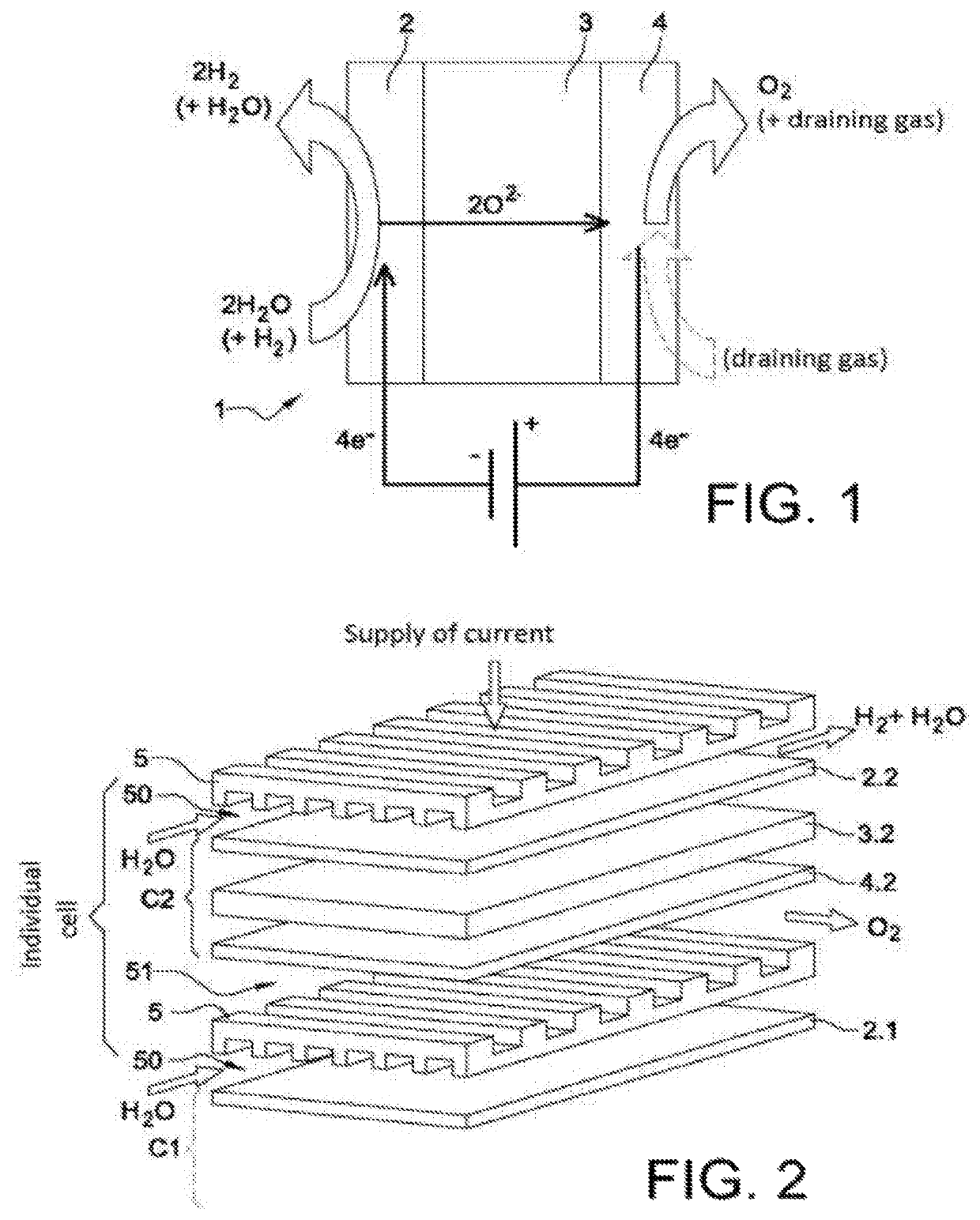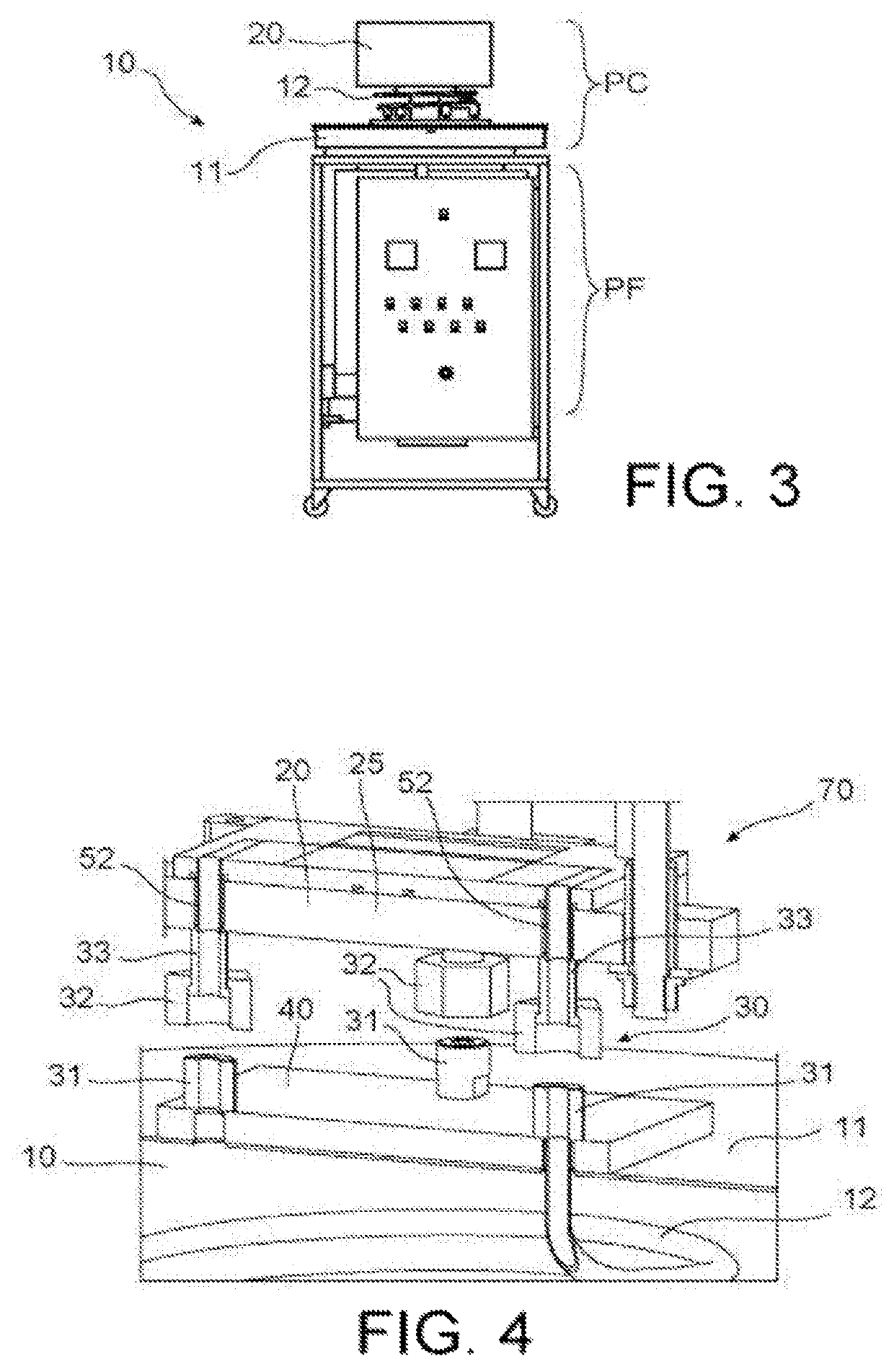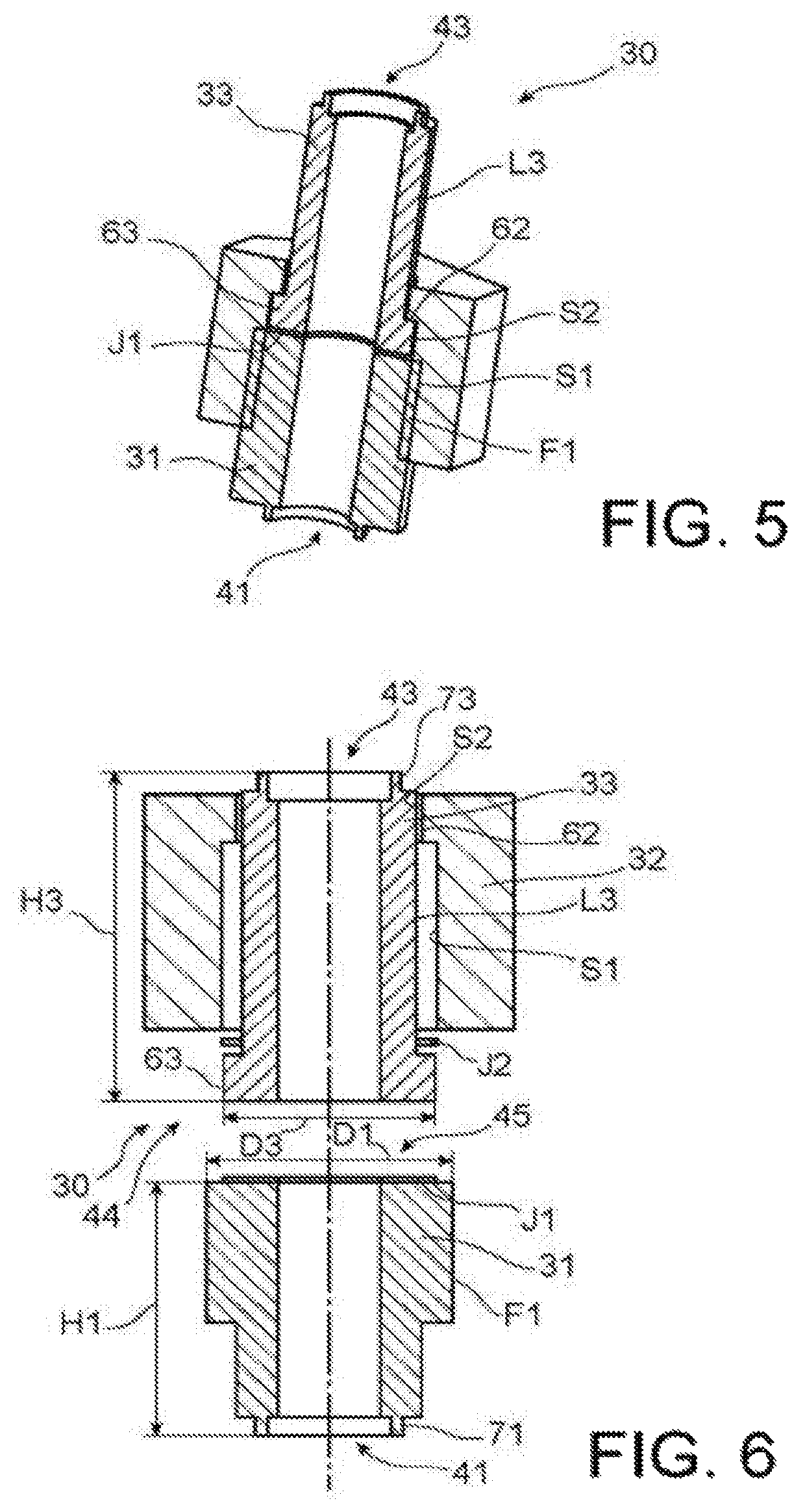System for high-temperature tight coupling of a stack having SOEC/SOFC-type solid oxides
a technology of solid oxide and high-temperature tight coupling, which is applied in the field of high-temperature electrolysis (hte) of water, can solve the problems of reducing yield, damage to the stack, and loss of yield
- Summary
- Abstract
- Description
- Claims
- Application Information
AI Technical Summary
Benefits of technology
Problems solved by technology
Method used
Image
Examples
Embodiment Construction
[0048]The purpose of the invention is to at least partially satisfy the aforementioned needs and overcome the drawbacks regarding the productions of the prior art.
[0049]It in particular relates to the production of a particular design of the coupling of a high-temperature electrolysis (SOEC) or fuel cell (SOFC) stack, and more specifically to the production, in the hot part, i.e. inside the enclosure of a furnace, and perpendicular to the gas inlets and outlets, high-temperature sealed connections, for example able to withstand temperatures of up to about 900° C., that can be removed and reused, thus giving the stack a “Plug & Play”-type feature.
[0050]The invention, according to one of the aspects thereof, thus relates to a system for the high-temperature sealed coupling of a stack having SOEC / SOFC-type solid oxides, characterised in that it comprises:[0051]a hollow connector that is at least partially threaded on the outer surface thereof, referred to as a threaded connector, inten...
PUM
| Property | Measurement | Unit |
|---|---|---|
| diameter | aaaaa | aaaaa |
| diameter | aaaaa | aaaaa |
| diameter | aaaaa | aaaaa |
Abstract
Description
Claims
Application Information
 Login to View More
Login to View More - R&D
- Intellectual Property
- Life Sciences
- Materials
- Tech Scout
- Unparalleled Data Quality
- Higher Quality Content
- 60% Fewer Hallucinations
Browse by: Latest US Patents, China's latest patents, Technical Efficacy Thesaurus, Application Domain, Technology Topic, Popular Technical Reports.
© 2025 PatSnap. All rights reserved.Legal|Privacy policy|Modern Slavery Act Transparency Statement|Sitemap|About US| Contact US: help@patsnap.com



